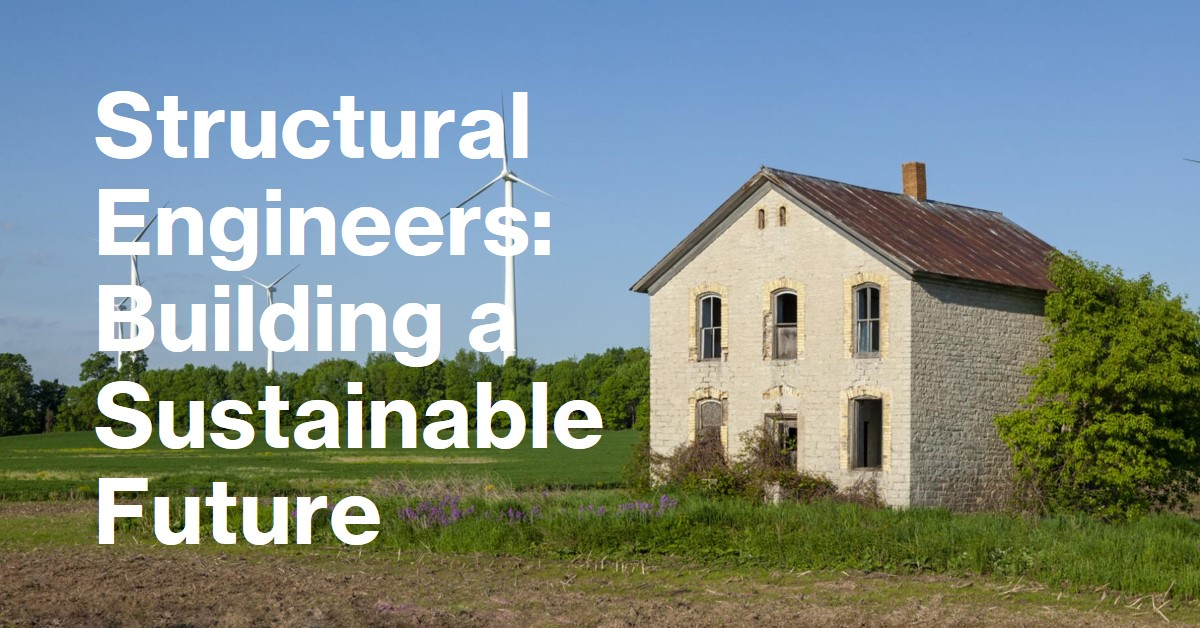

Sustainable Buildings: How Structural Engineers Lead the Way
The construction industry is undergoing a significant shift towards sustainability. With growing concerns about climate change and resource depletion, building structures that are not only functional but also environmentally responsible is no longer a luxury, it’s a necessity. This is where structural engineering services come to the forefront, playing a crucial role in translating sustainable design concepts into reality.
The Urgency for Sustainable Building Design
Statistics paint a clear picture: Buildings are major consumers of resources. According to the World Green Building Council, buildings are responsible for a staggering 39% of global energy use, 36% of global energy demand, and 38% of carbon dioxide emissions [Source: World Green Building Council]. These numbers underscore the significant impact the construction industry has on the environment.
In 2024, sustainable building design is no longer a niche concept. Building owners, developers, and architects are increasingly prioritizing sustainability, driven by factors such as:
Environmental regulations: Many countries are implementing stricter regulations on energy efficiency and carbon emissions in buildings.
Cost savings: Sustainable buildings often boast lower operational costs due to energy and water efficiency.
Occupant well-being: Studies have shown that green buildings can improve indoor air quality, occupant health, and productivity.
Market demand: There is a growing demand for sustainable buildings from tenants and investors who are increasingly environmentally conscious.
The Role of Structural Engineers in Sustainable Design
Structural engineers play a critical role in achieving sustainable building designs. They go beyond ensuring structural integrity to consider the environmental impact of the building throughout its lifecycle. Here’s how structural engineering services contribute to sustainable design in 2024:
Material Selection and Optimization: Structural engineers can recommend sustainable building materials with a lower embodied energy (the energy required to extract, process, transport, and manufacture the material). This includes using recycled materials, locally sourced options, and materials with high strength-to-weight ratios, which can reduce the overall amount of material needed.
Structural System Design: The chosen structural system significantly impacts the building’s environmental footprint. Structural engineers can explore innovative systems like prefabrication, which minimizes construction waste, or lightweight structures that reduce the building’s dead load and subsequent energy consumption.
Building Envelope Optimization: The building envelope plays a crucial role in energy efficiency. Structural engineers work with architects to design envelopes with high thermal resistance, minimizing heat gain or loss. This can involve incorporating efficient insulation materials, utilizing natural ventilation strategies, and optimizing window placements to maximize natural daylight.
Life Cycle Analysis: Structural engineers can employ life cycle analysis tools to assess the environmental impact of a building throughout its lifespan, from material extraction to demolition. This allows for informed decision-making at the design stage, prioritizing options with lower environmental impact.
Building Information Modeling (BIM): BIM software allows for collaborative design and analysis. Structural engineers can use BIM to explore various design options, simulate building performance, and optimize structural elements for efficiency and sustainability.
Collaboration is Key
While structural engineering services play a vital role, achieving true sustainability requires collaboration across disciplines. Architects, mechanical, electrical, and plumbing (MEP) engineers, and sustainability consultants all come together to create a holistic approach. Architectural firms like P99Soft, with their expertise in sustainable architectural services, can work alongside structural engineers to ensure design decisions consider both aesthetics and environmental impact.
FAQs: Building Green with Structural Engineering
What are some sustainable building materials that structural engineers can recommend?
Structural engineers can recommend materials like recycled steel, sustainably harvested timber, and low-carbon concrete. Additionally, using locally sourced materials can reduce transportation emissions.
How can structural engineering services help with natural disaster resilience?
Sustainable design often overlaps with resilience design. Structural engineers can incorporate features that improve a building’s ability to withstand natural disasters, minimizing long-term environmental impact from reconstruction.
What are the cost implications of sustainable building design?
While there may be an initial cost premium for sustainable features, these are often offset by long-term operational cost savings from reduced energy and water consumption. Additionally, many regions offer incentives for sustainable construction.
How can I find a structural engineer who specializes in sustainable design?
Look for structural engineering firms that highlight their expertise in sustainable building practices and certifications like LEED (Leadership in Energy and Environmental Design).
Conclusion
Structural engineering services are no longer solely focused on the structural integrity of a building. In 2024, they are at the forefront of achieving sustainable building designs. By collaborating with architects, other engineering disciplines, and sustainability specialists, structural engineers can create buildings that are not only strong and functional but also environmentally responsible. As the construction industry continues to evolve, the question remains: How can we further leverage structural engineering expertise to create a built environment that is not only sustainable but also meets the ever-changing needs of a growing population?
Also know GCC Construction Adhesive Market Trend, Size, Share, Trends, Growth, Report and Forecast 2024-2030.

